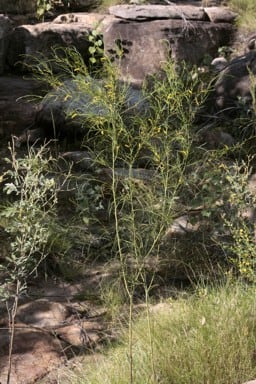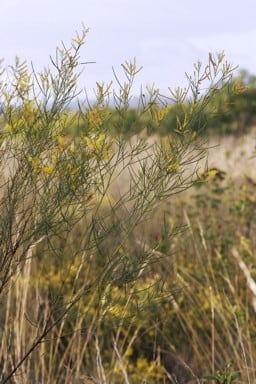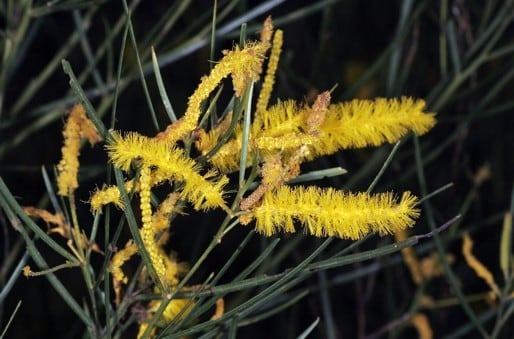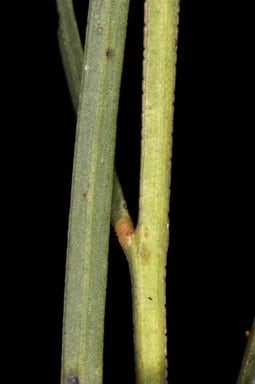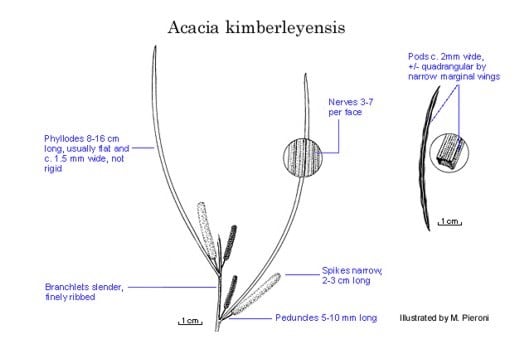Acacia kimberleyensis W.Fitzg.
WATTLE
Acacias of Australia
Family
Fabaceae
Distribution
Known from only two localities in the western part of the Kimberley region, W.A., namely, Packhorse Ra. (type locality) and Mt Agnes, c. 80 km to the N.
Description
Shrub 1–1.5 m high, glabrous. Branchlets slender, subangular, finely ribbed, resinous at least when young. Phyllodes narrowly linear, flat or ±quadrangular, 8–16 cm long, 0.8–2 (–3) mm wide, not rigid, with 3–7 subdistant somewhat raised nerves per face when flat; central nerve slightly more pronounced. Inflorescences simple, mostly 2 per axil; peduncles 5–10 mm long; spikes 2–3 cm long, narrow. Flowers 5-merous; sepals free, linear-spathulate. Pods narrowly linear, 7–10 cm long, c. 2 mm wide, thinly crustaceous, finely longitudinally nerved, dehiscing elastically from apex (fide protologue); margins very narrowly winged, with wing c. 1 mm wide. Seeds (fide protologue) longitudinally oblique, narrowly oblong, c. 6 mm long, shiny, greenish black; funicle/aril conical, equalling seed length.
Habitat
Judging from W.V.Fitzgerald’s unpublished diary the type was collected in an area dominated by Eucalyptus miniata woodland over spinifex and the rocks were sandstone nerved with quartzite.
Specimens
W.A.: near Mt Agnes, C.A.Gardner 1432 (NSW, PERTH).
Notes
The (narrowly) winged pods, narrow spikes and free sepals indicate that A. kimberleyensis is related to A. conjunctifolia, A. gonocarpa, A. lentiginea, A. richardsii and A. tenuispica, but easily distinguished by its long, narrow phyllodes.
The Gardner collection from near Mt Agnes is in flower and differs from the type in having very slender, almost quadrangular phyllodes c. 0.8 mm wide (phyllodes flat and 1.5–1.8 mm wide on the type). Pods are needed to confirm that this collection has been correctly placed in A. kimberleyensis. Gardner’s specimens superficially resemble A. filamentosa which is distinguished by its generally longer, terete phyllodes with very obscure nerves, and united sepals. It is also very similar to A. filipes which differs in its longer peduncles and terete, obscurely ribbed branchlets.
FOA Reference
Data derived from Flora of Australia Volumes 11A (2001), 11B (2001) and 12 (1998), products of ABRS, ©Commonwealth of Australia
Author
B.R.Maslin
This identification key and fact sheets are available as a mobile application:
URL: https://apps.lucidcentral.org/wattle/
© Copyright 2018. All rights reserved.


